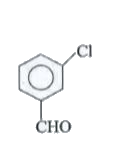A compound that easily undergoes bromination is
Phenol
Toluene
Benzene
Benzoic acid
To determine which compound easily undergoes bromination, we need to analyze the provided options based on their electronic effects and how they influence the reactivity of the benzene ring towards electrophilic substitution reactions, specifically bromination.
1. Understanding Bromination:
- Bromination is an electrophilic substitution reaction where bromine (Br2) is added to an aromatic compound. The reaction typically requires a catalyst, such as FeBr3, to generate the electrophile (Br+).
2. Identifying the Options:
- The options given are:
1. Phenol
2. Toluene
3. Benzene
4. Benzoic acid
3. Analyzing Each Compound:
- Phenol: Contains a hydroxyl group (-OH) which is an activating group. It has a +M (mesomeric) effect, increasing the electron density on the benzene ring, particularly at the ortho and para positions.
- Toluene: Contains a methyl group (-CH3) which is also an activating group but has a +I (inductive) effect. It increases electron density but not as effectively as -OH in phenol.
- Benzene: A simple aromatic compound with no substituents. It has no activating or deactivating groups.
- Benzoic Acid: Contains a carboxylic acid group (-COOH) which is a deactivating group due to its -M (minus mesomeric) effect, reducing electron density on the ring.
4. Determining Reactivity:
- The compound that shows the highest electron density at the ortho and para positions will be the most reactive towards bromination.
- Phenol, due to the +M effect of the -OH group, significantly increases electron density at the ortho and para positions, making it highly reactive towards electrophiles like Br+.
- Toluene is also reactive but less so than phenol because the +I effect of the -CH3 group does not increase electron density as much as the +M effect of the -OH group.
- Benzene is not reactive towards bromination without a substituent.
- Benzoic acid is the least reactive due to the -M effect of the -COOH group.
5. Conclusion:
- Among the given options, Phenol is the compound that easily undergoes bromination due to its strong activating effect.
Final Answer:
The compound that easily undergoes bromination is Phenol.
- Bromination is an electrophilic substitution reaction where bromine (Br2) is added to an aromatic compound. The reaction typically requires a catalyst, such as FeBr3, to generate the electrophile (Br+).
- The options given are:
1. Phenol
2. Toluene
3. Benzene
4. Benzoic acid
- Phenol: Contains a hydroxyl group (-OH) which is an activating group. It has a +M (mesomeric) effect, increasing the electron density on the benzene ring, particularly at the ortho and para positions.
- Toluene: Contains a methyl group (-CH3) which is also an activating group but has a +I (inductive) effect. It increases electron density but not as effectively as -OH in phenol.
- Benzene: A simple aromatic compound with no substituents. It has no activating or deactivating groups.
- Benzoic Acid: Contains a carboxylic acid group (-COOH) which is a deactivating group due to its -M (minus mesomeric) effect, reducing electron density on the ring.
- The compound that shows the highest electron density at the ortho and para positions will be the most reactive towards bromination.
- Phenol, due to the +M effect of the -OH group, significantly increases electron density at the ortho and para positions, making it highly reactive towards electrophiles like Br+.
- Toluene is also reactive but less so than phenol because the +I effect of the -CH3 group does not increase electron density as much as the +M effect of the -OH group.
- Benzene is not reactive towards bromination without a substituent.
- Benzoic acid is the least reactive due to the -M effect of the -COOH group.
- Among the given options, Phenol is the compound that easily undergoes bromination due to its strong activating effect.
The compound that easily undergoes bromination is Phenol.
Similar Questions
Knowledge Check
Which one of the following compounds undergoes bromination of its aromatic ring (electrophilic aromatic substitution) at the fastest rate ?
A B
B C
C D
D
Which of the following compound undergoes bromination on aromatic ring at fastest rate.
A B
B C
C D
D
Identify the compounds that will undergo nucleophilic aromatic substitution reaction :
A B
B C
C D
D
What is the van't Hofffactor for a compound which undergoes tetramerisation in an organic solvent ?
View SolutionThe compound which undergoes only racemisation on heating is
View SolutionFrom the list of the organic compounds ethanol, ethane, methanol, methane, ethyne and ethene, name a compound
Which decolourises bromine solution in carbon tetrachloride.
View SolutionWhich of the following compound undergoes dehydrochlorination most easily when treated with alcoholic KOH ?
View SolutionThe compound which undergoes Srl reaction most rapidly is :
View Solution
